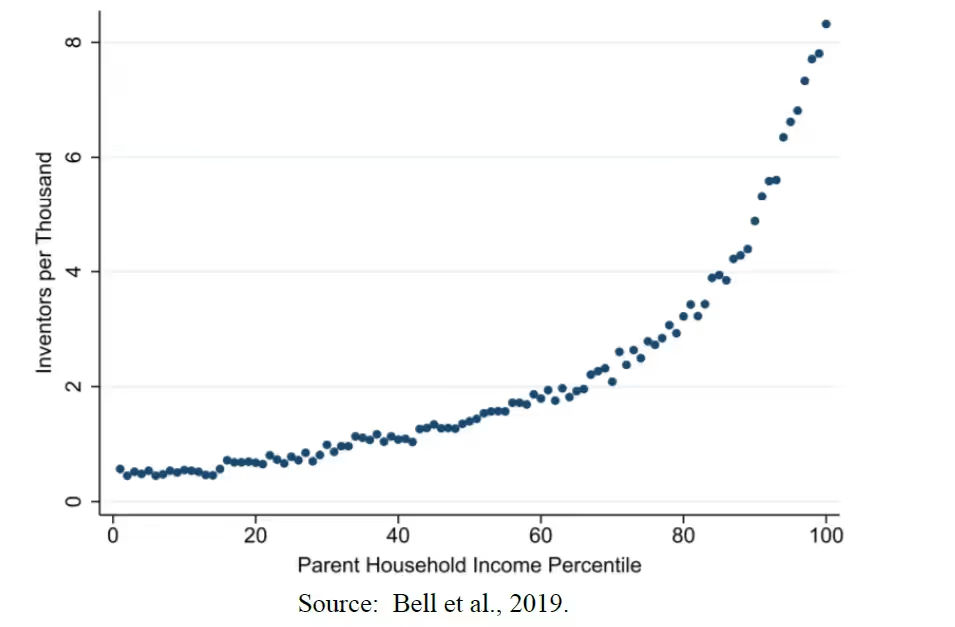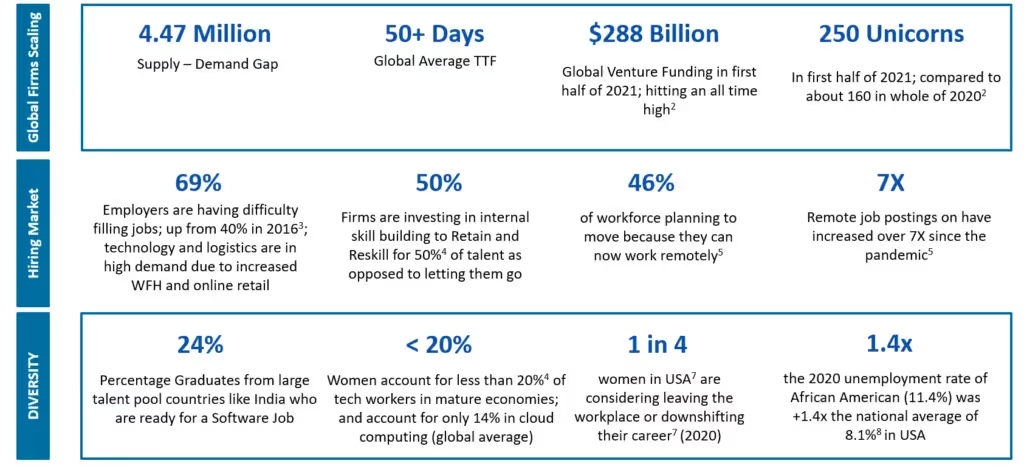Workforce Planning Initiative for Early Career Talent
We had a deeper introspection of the Future of Work and the various aspects that Workforce Planners and Senior business leaders should consider. We begin with an Inspiring journey – of Joël Y. Joël Y started his work life as an inventory analyst at Abercrombie and Fitch. In his own words, “Nothing fancy here. I unpacked boxes of clothes in the back of the store… literally”. Post joining a ride-hailing startup, Joël Y started getting into technology, as the company encouraged him to learn Software. He completed a Bootcamp on Full Stack with Dev Bootcamp and from there went to Facebook as a Software Developer and now at Google!. The starting point or the foundational degree was not a complex technical degree – Joël Y started with a BBA.
In July, Dr. Jason Furman from Harvard University gave a fascinating testimony before the Select Committee on Economic Disparity and Fairness in Growth in the US. Though the data leveraged was specific to the US, implications, and trends are almost similar across geographies. Dr. Jason Furman has articulated some exciting points of view on the Future of Work. Even an intellectual powerhouse like Dr. Jason Furman was stumped once by Chris Hughes (one of the cofounders of Facebook) when Hughes asked, “what are you planning for a future with more AI and where there might be fewer jobs.” This question was asked by Hughes almost 15 years ago, but it appears that Dr. Jason Furman has since then thought a lot about preparing the workforce for the Future of work. Dr. Furman advocates many policy changes, the details of which we will reserve for another email.
Effect of wealth of patents filing
Two aspects that stood out for me in the testimony – Improving Women participation rate in the labor markets and creating an environment where early career talent thrives (set of policies that need to be in place). One of the striking studies given in the testimony is the effect of wealth of patents filing. This study comes from Bell et al. (2019), which finds that the rate of patenting is very closely related to family incomes, as shown in the figure below. If the ability to invent is not related to family incomes, then this is also evidence that we are missing out on what the authors call “Lost Einsteins” This is such a mind-blowing study.

How can enterprises showcase more such stories?
If this is true, what can Enterprises do to break this inequality chain – specifically, how can workforce planners design new models to enable Early Careers to thrive?
Now let us look at the opening story of Joël Y. To me, this story is a true story of enablement where ride-hailing startup encouraged the candidate and pushed into Software. How can enterprises showcase more such stories?. A critical component that large enterprises miss is Experimentation. Let us look at the current state of the labor market.

This table clearly shows the problem is not just in Hiring. The demand has to be met by creating more examples like Joël Y.
Workforce Planning Initiative
Consider any early-career graduate related to data, business, and other neighboring fields and translate them into an entry-level Software Developer; the following are the steps. There are essentially three significant layers (there are many nuances but for simplicity providing this description)
- Introductory Layer: HTML, CSS, Flexbox, Grid, and Bootstrap the fundamentals of JavaScript and jQuery, the industry-standard framework that lets you quickly and easily write powerful JavaScript.
- In the second layer, students learn fundamental JavaScript programming concepts, including variables, data types, loops, and DOM. Progress to two powerful JavaScript libraries for web and app development, React and React Native.
- Python Development with Django This third layer starts with the basics of Python. You’ll learn the lexical syntax of Python and quickly move onto more advanced topics such as dictionaries, custom functions, and sorting algorithms. You’ll progress to Object-Oriented Programming, working with APIs, and querying databases with SQL.
The course completion time will be around 300 hours and say 3 to 4 months of projects and mentoring – in less than nine months; you have a functional SDE1. (at least close to it)
So pick a location like San Antonio, Texas, or Gdansk – Poland, where the entry-level BBA type degrees cost less (say 40K USD in San Antonia and say 35K USD in Gdansk). The cost of experimenting with such a COE to hire and train, say ten people is only around 400K*0.75 = 300K USD (even if you assume it may take nine months to scale). The cost of training each resource will be around 10K per person – so that is a cumulative investment of 400K USD. (will be a bit cheaper in Gdansk). The cost of SDE1 that a big tech company would offer is close to 180K USD plus (including all components of base pay, bonus, RSUs, etc.)
Now, this is how Enterprises can discover the “Lost Einsteins.” Early Career Talent is not just visiting a few universities and hiring the best available computer grads from there
Hope we can work with you to write a white paper for finding the lost Einsteins for your Enterprise. Please let us know when we can work on this key “Workforce Planning Initiative.”










.svg)




















.svg)





.svg)
